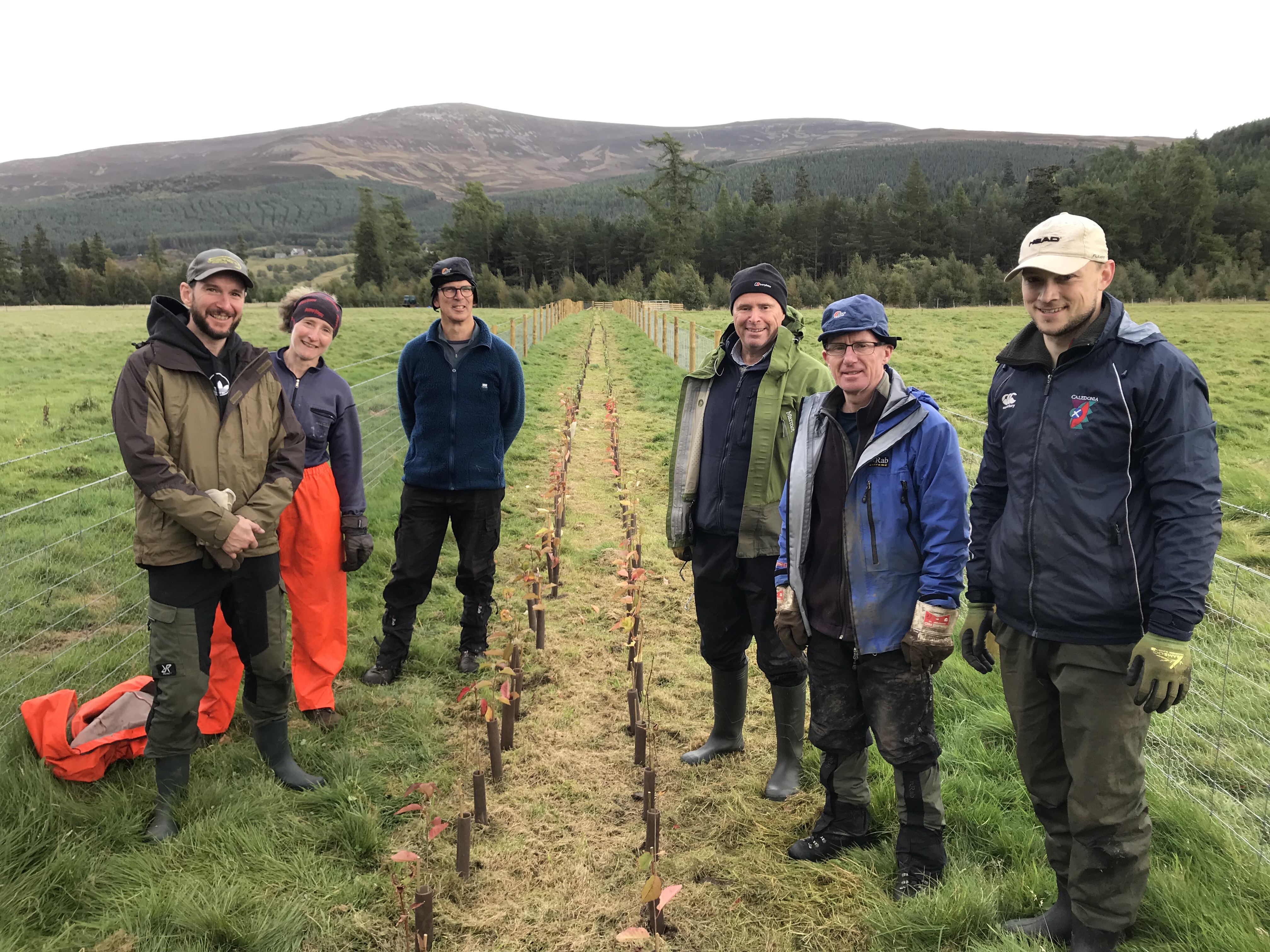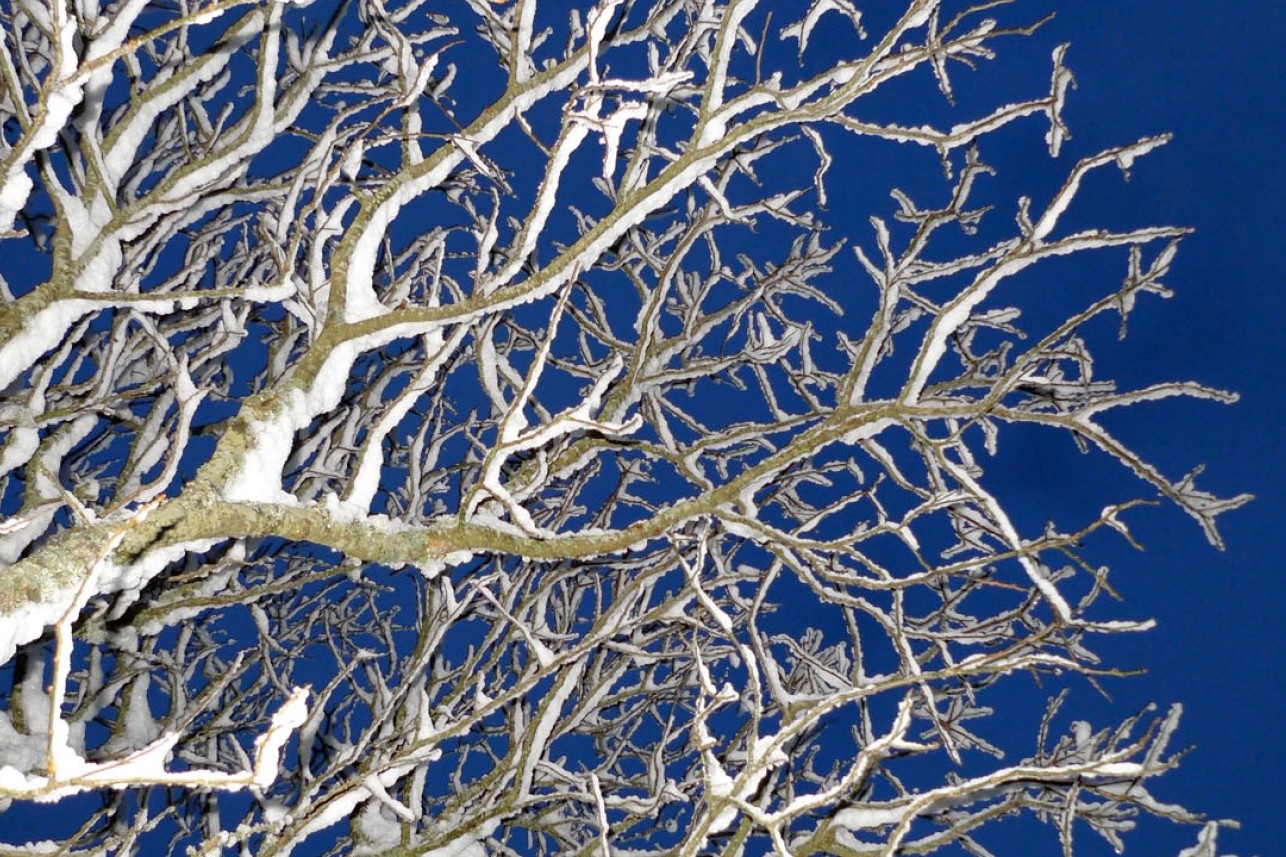Wild North East Scotland Members in 2023
James Brownhill reports on how the Local Members' Group has made a difference to North East Scotland's wild places this year.
 ^ Hedge planting team take a break
^ Hedge planting team take a break
The John Muir Trust North East Scotland Local Members Group gathered for 15 conservation days and three two-day events in 2023; hosted by the ranger services at Glen Tanar (Aboyne) and Balmoral and by the rangers and ecologists at National Trust for Scotland (NTS) Mar Lodge.
Additionally, the group gathered at at the University of Aberdeen for a spring presentation given by a local Trust volunteer, relating his ambitious 45-day circumnavigation of Scotland by sea kayak. In the autumn, a screening of the Trust’s Clear on Deer film attracted an attentive audience including students from relevant courses at both the city’s universities.
Average turnout for the volunteering days was nine, peaking at 17, so a good amount of work was achieved. Tasks varied from demanding footpath repair after the ravages of winter storms; to the delicate handling and planting out, under guidance from Plantlife experts, of the endangered twinflower.
^ Repairing a 25-year-old deer exclosure
The group built a couple of new riparian four-metre square fenced deer enclosures and populated them with birch, rowan, alder, hazel, blackthorn, wild cherry, and dog rose. They also repaired the 30-year-old existing enclosures, which now boasted a magnificent display of mature trees. Similar tree species were used to plant natural hedges with the aim of improving the future diversity of lowland pastures.
Elsewhere, they built brash hedges to discourage deer entry and planted native woodland trees within them and removed a redundant deer fence and stacked it ready for recycling.
^ Deer fence removal team
A long section of redundant, full-height deer fence was removed, a demanding task on rough, sloping ground but a slow steady approach ensures a safe and effective result with all materials methodically stacked at the nearest track for later pickup, and recycling.
Some of the tasks are quite surprising. Ring-barking trees involves cutting off a section of bark around the full circumference of the tree trunk with a hand axe. This severs the tree’s “arteries” for sugars and water and is usually applied to trees planted for commercial purposes, often non-native species. The ring-barked trees will become deadwood offering home and food for a wide variety of fungi, mosses and saproxylic invertebrates, in turn leading to a far greater biodiversity of the woodland.
Even more obscure is the attachment of a three pronged clip to the top leading growth of a two to four year old Scots pine, which acts as an effective discouragement for deer attempting to nibble the growth. They work but after each summer's growth, the clips have to moved up to the new top of the tree.
Our special two-day conservation events included bunk-house style accommodation provided by the host estate, with the evening session always being a very relaxing social occasion discussing a wide variety of conservational topics with the attendant ranger.
As the days shorten, the busy North East Group programme slackens off to just one event per month, when taking a break for mince pies under a crystal blue sky at -1C can be very enjoyable.
- Find out more about upcoming North East Scotland Local Members Group conservation days on our Events page.


